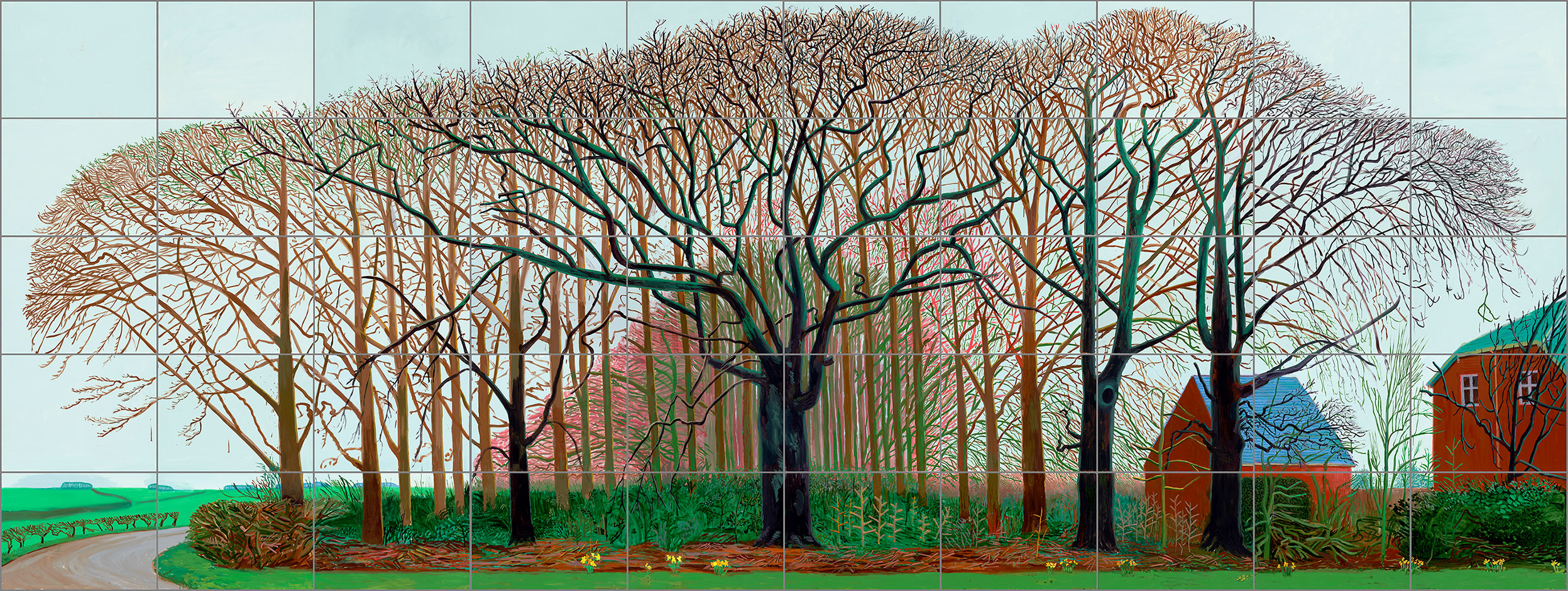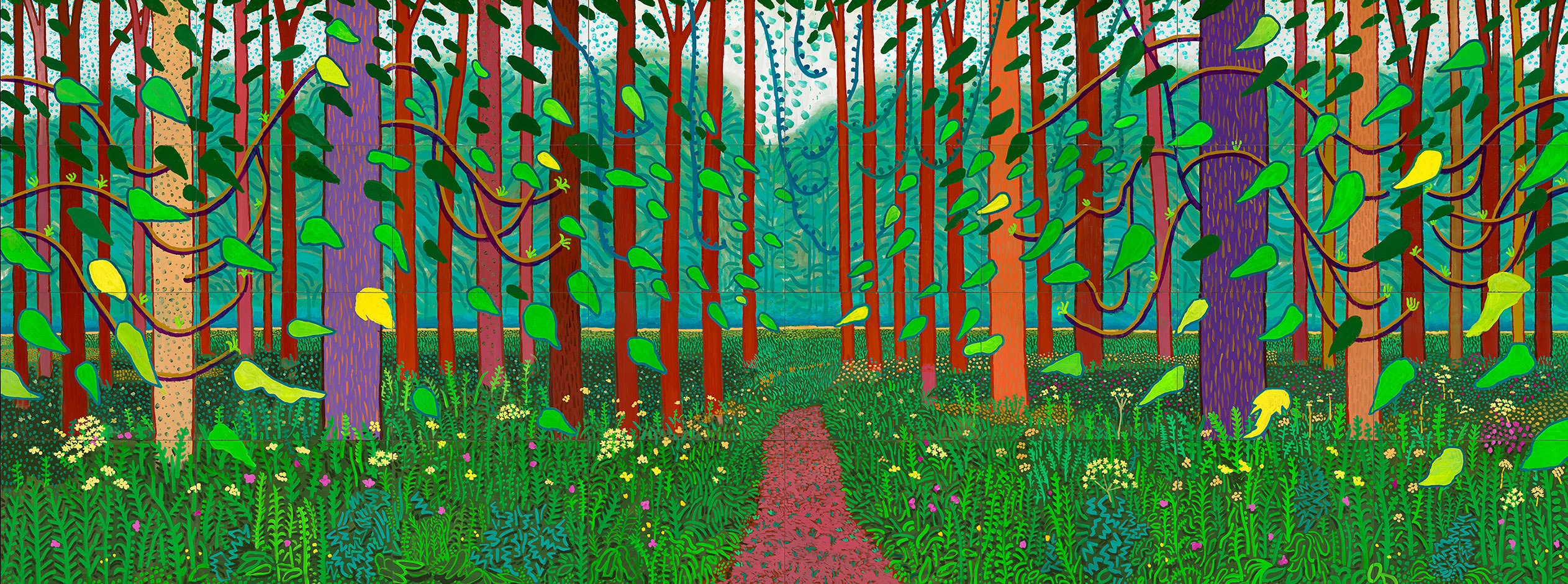Landscape
A Bigger Landscape
David Hockney returned to Great Britain in 2005. The wind and weather there awakened his interest in the seasons of the year. He began depicting the awakening of nature in monumental paintings or on his iPad.

Bigger Trees near Warter or / ou Peinture sur le Motif pour le Nouvel is Hockney’s largest painting, at more than 12 metres in width.
From 2005 onwards the landscape around Bridlington shifted to the centre of Hockney’s art. The village is in Yorkshire, where the artist grew up. His mother also lived in Bridlington, and he owned a studio there.
Whereas in California the sun was almost always shining and the temperatures very mild the whole year through, life in Great Britain is marked by the changing seasons and by wind and weather. David Hockney is captivated by the changes in nature.
For this work, Hockney travelled in a pickup and with his assistant to Warter so as to paint on site over a period of three weeks. The artist could only work simultaneously on six canvases outdoors, and in his studio in Bridlington he could only observe a maximum of ten of the 50 canvases that make up this work at one time. For which reason he used a computer to verify whether the different images fit together and to record the painting’s progress.
Hockney explained the short period of time required to complete the painting by the fact that he wanted to be finished before the leaves concealed everything. His main interest was in the confusion of branches that cover and link the different canvasses like a net. At the same time, it is the branches that highlight slight shifts and colour changes between the individual panels.
Plein-air painting, which emerged in early Romanticism, became the favoured artistic technique of the Impressionists: painting “sur le motif” or “en plein air” was supposed to guarantee the correct reproduction of the colour atmosphere. For David Hockney too, it is of great importance to observe nature precisely. The combination of painting tradition and computer technology that Hockney refers to in the title is typical of him. As both an innovator and a tradition-bound artist, he brings different standpoints together quite easily.
“Spring cannot be cancelled.”
David Hockney, 2021
Spring Feelings
Spring, which stands for return, growth and fertility, is clearly Hockney’s favourite season. He has devoted many works to it.

With The Arrival of Spring in Woldgate, East Yorkshire in 2011 (twenty eleven) Hockney presents us with a bustling spring that is already well advanced. To do this he uses strong colours, working with the complementary shades of purple and orange. His application of the paint is smooth and the planes are structured with dots and dashes. The forms are simplified and partly provided with striking outlines. Hockney treats the fore and middle ground differently to the background, which is greatly simplified and reduced in terms of colour. The result gives the impression of a stage, heightened by the yellow horizontal line demarcating the two sections.
The vegetation appears to be animated, and the symmetrical composition, with part of a pathway in the centre of the painting and the two purple trees to the left and right, underscores the fictive-imaginative character of the painting. The rendering of the trees, leaves and tendrils is reminiscent of comics and seems to be influenced by Hockney’s iPad drawings.
in Normandy
In 2019 Hockney bought an old house in Normandy. He lives there in seclusion, painting the surroundings and nature. During the pandemic the artist had plenty of time to capture nature on his iPad. His motto during lockdown was, “spring cannot be cancelled”. In the face of the global crisis, this statement is a prime example of Hockney’s optimism.
“Every time I go out, I see something to draw. I just look somewhere and I start. I’ve just done the pond, again. I’ll show you very soon. It’s not finished yet. In nature, as I’ve said before, it’s all in flow; in fact everything is flowing, other than the lockdown. I can draw and paint it here, especially with the rippling river. I know how to do the water now, I am watching it bubbling. I’m staying here for another spring, summer, and autumn.”
David Hockney, 2021